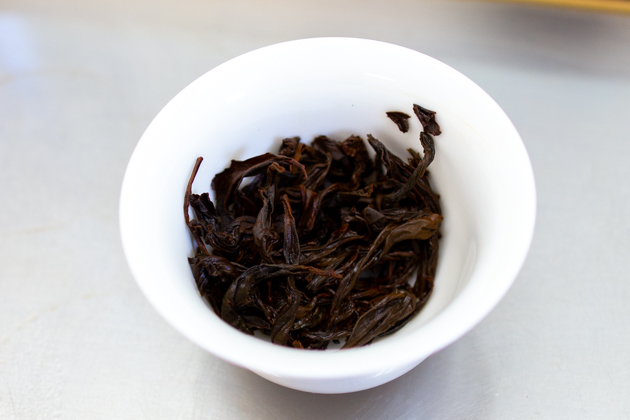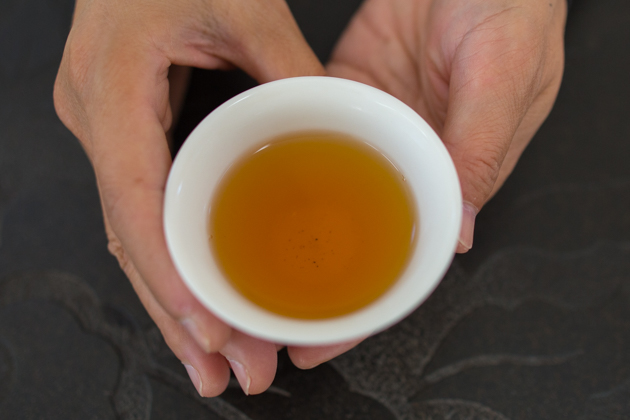The aroma characteristics of Zhengshan race the origin story and origin of the first kind of black tea in the world
Black tea is made from spring buds and leaves planted and processed in Tongmu Village, the birthplace of black tea 450 years ago. Full-bodied, with the characteristics of origin: exquisite rosin, deep amber body, crisp longan fruit, sweet finish. It's good for those who want lighter smoked black tea, and even for those who don't like the more common smoked tea.
Like to drink pine smoke black tea most Asians prefer the delicate smoke of primitive paulownia tea rather than the thickness of Zhengshan race tea, which is mainly consumed by the British. When the tea first entered the Fuzhou market in the late 17th century, buyers were very interested in this new style of pine tobacco tea. When asked their names, they were told that this was Wuyi tea ("tea from Wuyi"), which they pronounced as Bohea (Boo-he). This is another name of the Zhengshan race.

The original Tongmu black tea Tongmu Zhengshan race is the first kind of black tea in the world, which was created by innovative tea farmers in Tongmu village in southeastern China. This kind of tea comes directly from Zhengxiaoshan Farm in Tongmu Village, Wuyi Mountain, Fujian Province.
The bamboo strips on the second floor of the tea factory have been smoked, and the smoke can rise to the tea leaves.
The smoked bamboo strips on the upper floor of the tea factory can make the smoke rise from the lower floor to the tea leaves. The amount of smoke can be controlled by laying bamboo mats on the lattice. Tongmu Village was founded from 1607 to 1644. The terrain of this small village is difficult to cultivate, so the villagers can only grow tea and bamboo successfully. Because they are unable to grow enough food to survive the harsh mountain winter, they rely heavily on selling their particularly sweet tea, which is rich in amino acids because it is grown at high elevations. At that time, green tea was the only tea invented, so the tea was fried and shaped in a pan and then baked on a bamboo stove fueled by tasteless bamboo charcoal.
In the spring of the year when black tea was invented, at the peak of the tea harvest, a cunning general decided to unexpectedly send his troops across a rugged mountain road leading to Tongmu village. One day, after picking tea, the soldiers trampled on the town, forcing the villagers to flee and hide in the mountains, while the soldiers ate up the rest of the food and slept on the tea leaves they had just picked. A few days later, when the soldiers left, the villagers came back to find their leaves broken, oxidized and covered with the stench of the soldiers. One villager suggested that they should try to roast leaves with Masson pine charcoal (a local tree) instead of bamboo to cover up the bad smell.
A man was holding a round tray covered with dark oxidized black tea leaves, still wet.
Fully oxidized Tongmu black tea leaves are still moist. The villagers shipped the tea to a trade center town called Xincun, where the goods were shipped to the port city of Fuzhou. They begged a merchant from the new village to harvest their crops. They thought that even if there was a profit, they would not make much, but they were surprised to find that the next year not only had a good return, but also asked for the addition of this new loose-baked tea. In this way, the first black tea was born.
Important Notice :
前街咖啡 FrontStreet Coffee has moved to new addredd:
FrontStreet Coffee Address: 315,Donghua East Road,GuangZhou
Tel:020 38364473
- Prev

What is the difference between the taste characteristics of Anji black tea and Anji white tea?
New and chic black tea with aromas of malted grain, mellow fruit and honey sweetness. Anji red is made from the same amino acid-rich variety as Anji white tea and green tea. Angel Red in 2021 maintains the characteristics of the glycol black tea you saw last year. The demand for this kind of tea is very strong, so I
- Next

Morning C Night A What is Terrier Coffee Brand M Stand Launches Five Day Coffee Night Wine Theme Stores
"Sip coffee by day, taste wine by night" has become a happy guide for young people today. October 8, a "morning C evening A" micro bo rushed to the micro bo hot search first position. Originally, this micro blog was a hot search about skin care science popularization, but the discussion direction and topic heat of the netizens finally made the topic's style of painting to "day coffee night wine."
Related
- Being chased out of the rain in front of Starbucks?! Store: Sheltering from rain under umbrellas poses a safety hazard
- The white moonlight has changed?! Lucky launches "Big Winter Pear American"
- Hand-brewed coffee three-stage method, high-sweet and universal brewing method to share! What does the high sweet water level of hand-brewed coffee mean?
- What is the difference between raw, refined and full espresso coffee? How to extract espresso and taste good?
- A complete list of coffee bean names and their meanings! What is Yejia Shefi coffee? Where is Mantelin coffee?
- What grade does Arida Manor Kaduai coffee beans belong to? What treatment is Arida ASD slow anaerobic sun exposure?
- The milk tea cup becomes smaller?! Overlord Tea Girl launches a new "Return to Yunnan" series
- Accused of selling counterfeit and high-priced coffee beans! Well-known boutique coffee brand "Oukelao" bowed and apologized!
- How to make espresso dumplings? Can I eat coffee and glutinous rice balls together?
- Save the unformed and stagnant powder cakes in one second! What is the problem with stagnant water in the powder bowl of the espresso machine?

